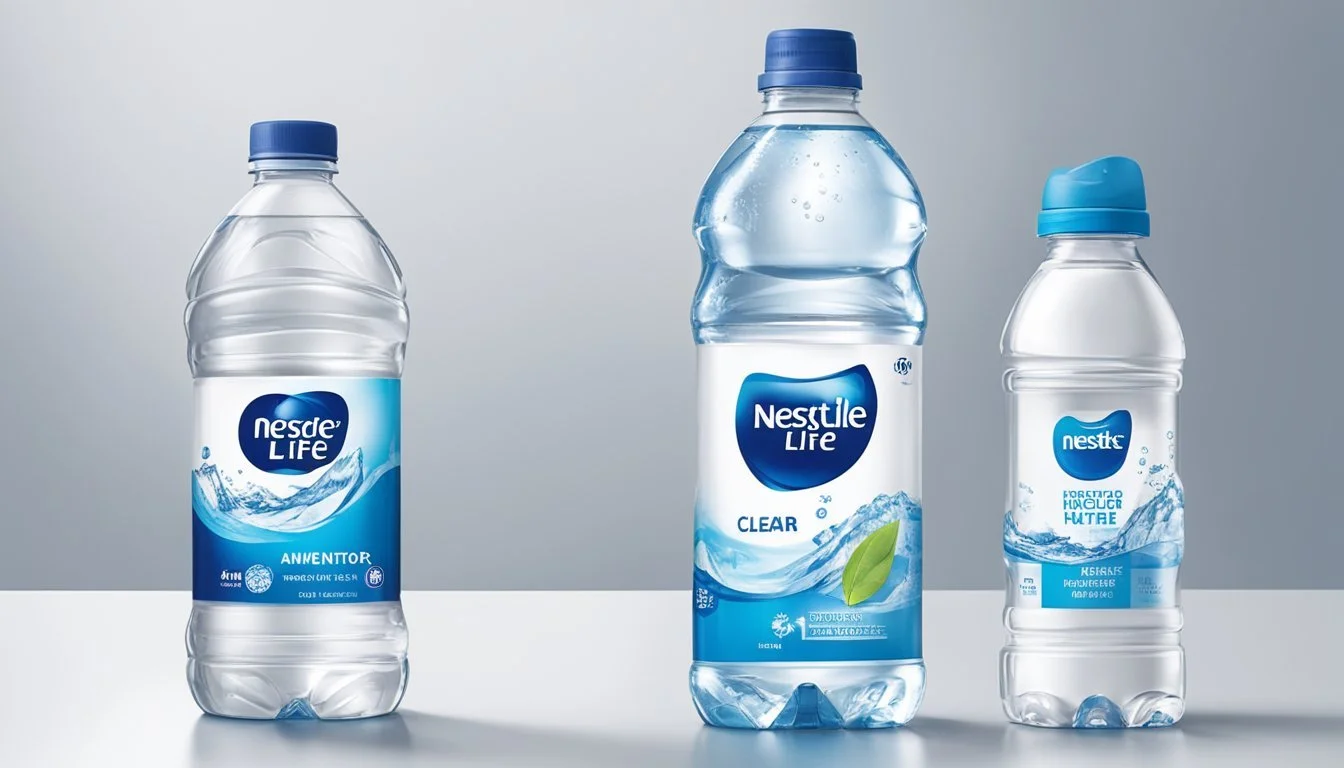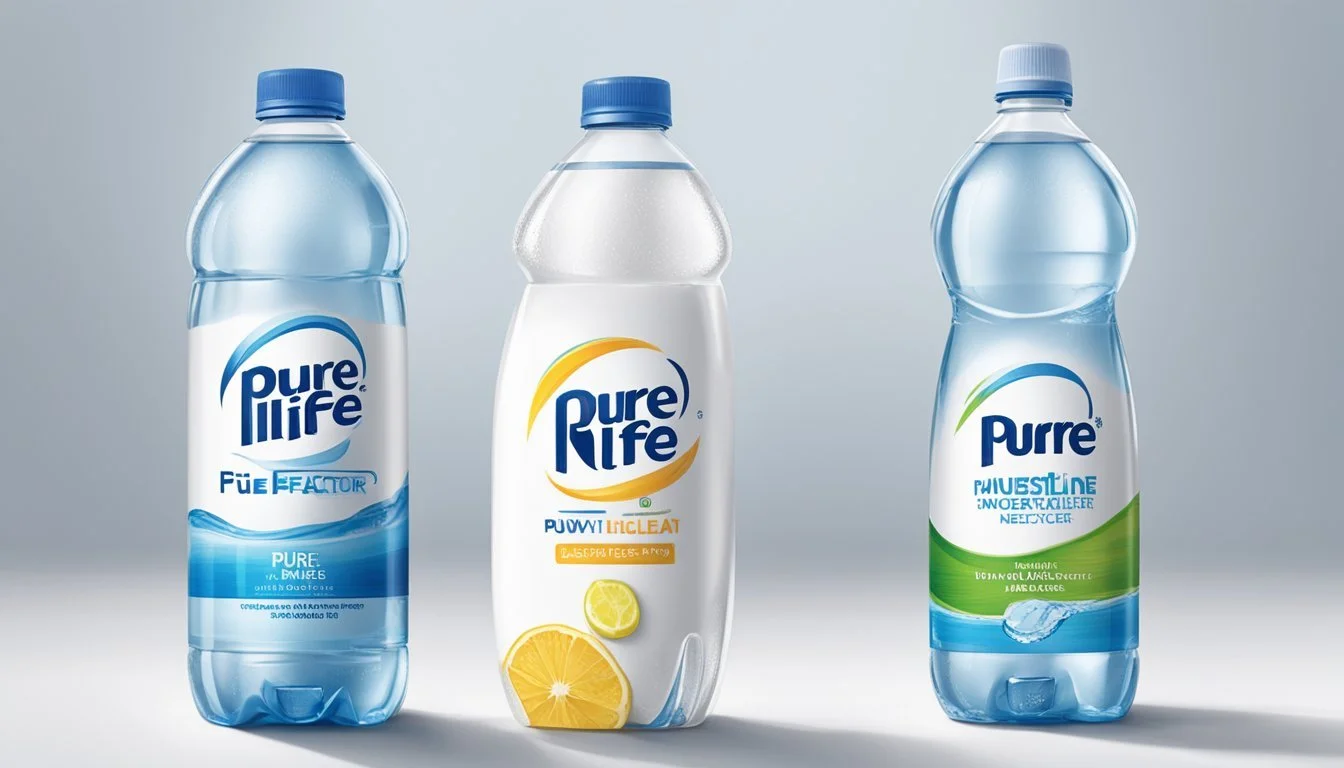Nestlé Pure Life vs. HFactor
An Unbiased Comparison of Quality and Benefits
Choosing the best bottled water can be a complex decision, given the variety available on the market. When comparing Nestlé Pure Life and HFactor, Nestlé Pure Life offers a reliable and widely available purified water option, while HFactor boasts unique hydrogen-infused water aimed at enhancing athletic performance and hydration. Both have their strengths, but their suitability depends on individual needs and preferences.
Nestlé Pure Life is known for its accessible and consistent quality. As a purified water, it undergoes extensive processing to ensure safety and cleanliness, positioning it as a solid choice for everyday hydration. Its widespread availability makes it a convenient option for a broad spectrum of consumers.
In contrast, HFactor sets itself apart with its hydrogen-infused water, which claims to provide additional health benefits such as improved recovery and vitality. This innovative approach targets health-conscious individuals and athletes looking for performance enhancements. The distinct features of each brand highlight the diverse options available in the bottled water market, catering to different consumer preferences and needs.
Understanding Bottled Water
Bottled water comes in many forms, each with unique characteristics based on its source and treatment processes. The industry itself is regulated to ensure quality and safety standards are met for consumer protection.
Defining Bottled Water
Bottled water is simply water that is sealed in bottles for consumption. It can be sourced from springs, wells, groundwater, or municipal supplies.
Types of bottled water include:
Spring Water: Collected from an underground formation.
Purified Water: Treated to remove impurities.
Mineral Water: Contains naturally occurring minerals.
The categorization depends on the source and the processing it undergoes before bottling.
Types and Sources
Different types of bottled water come from specific sources and undergo various treatment processes.
Spring Water originates from underground sources and is collected at the spring itself or through a borehole tapping the underground formation.
Purified Water comes from any source, such as tap water or groundwater, but undergoes a purification process like distillation, deionization, or reverse osmosis.
Mineral Water must contain a consistent level of minerals directly from the source, without any additional minerals added after extraction.
Carbonated Water includes water into which carbon dioxide gas has been dissolved, making it fizzy.
Regulatory Overview
Bottled water is regulated to ensure it meets health and safety standards. In the United States, the FDA (Food and Drug Administration) enforces regulations that bottled water manufacturers must follow.
These regulations cover:
Source Protection: Ensuring the water originates from an approved source.
Labeling Requirements: Correctly identifying the type and source.
Safety Standards: Limits on contaminants like lead and other impurities.
Bottled waters are tested regularly to ensure they meet these safety standards, ensuring the quality and safety of the water consumers drink.
Comparative Analysis of Nestlé Pure Life and HFactor
Both Nestlé Pure Life and HFactor bottled waters aim to provide high-quality water but differ significantly in their sourcing, purification processes, and health benefits.
Water Source and Quality
Nestlé Pure Life sources its water from municipal supplies, which undergo rigorous purification processes. The water is treated using multiple filtration methods, including reverse osmosis and carbon filtration, to ensure a high level of purity. Quality assurance protocols ensure that the water meets safety and taste standards consistently.
HFactor, on the other hand, focuses on hydrogen-infused water. It sources its water from natural sources and infuses it with molecular hydrogen. This hydrogen infusion is believed to offer antioxidant properties. HFactor maintains transparency about its sourcing and quality checks, allowing consumers to understand the origins and benefits of their water.
Taste Profile
The taste of Nestlé Pure Life is characterized by its clean and neutral profile, a result of the extensive purification processes it undergoes. The brand aims for a consistent flavor, appealing to those who seek a familiar and predictable taste in their bottled water.
HFactor offers a slightly different experience due to the addition of hydrogen. While some consumers may not notice a significant difference in taste from regular water, others report a subtle change, often described as smoother. The taste can be influenced by the presence of hydrogen molecules, making it unique compared to conventional bottled water.
Health and Hydration
In terms of health and hydration benefits, Nestlé Pure Life focuses on providing purified water without additives, ensuring it is free from contaminants. The water is designed to hydrate effectively without any specific health claims beyond its purity and safety standards.
HFactor differentiates itself by marketing the potential health benefits of hydrogen-infused water. The hydrogen molecules in HFactor water are believed to act as antioxidants, potentially reducing oxidative stress in the body. This can contribute to overall health and wellness, although scientific consensus on these claims varies. HFactor's unique proposition may appeal to health-conscious consumers looking for benefits beyond basic hydration.
Purity and Contaminant Levels
The purity and contaminant levels of bottled water are crucial for evaluating the health benefits and safety of different brands. Nestlé Pure Life and HFactor use distinct processes to maintain the purity of their products while controlling contaminants.
Assessing Purity
Nestlé Pure Life is known for undergoing a rigorous multi-step filtration process, which includes reverse osmosis, to remove impurities. This process ensures the water is free from common contaminants like lead, arsenic, and heavy metals.
HFactor uses a different approach by infusing molecular hydrogen into the water, which does not alter the basic filtration but aims to enhance antioxidant properties. The natural spring source of HFactor helps maintain the water's purity, offering a clean, refreshing taste.
Testing reports indicate that both brands strive to minimize contamination by regularly checking for microplastics, PFAS chemicals, and other harmful substances. For consumers worried about purity, both Nestlé Pure Life and HFactor present reliable options with strict adherence to safety standards.
Filtration and Treatment Processes
Nestlé Pure Life employs a multi-stage filtration that includes reverse osmosis, carbon filtration, and UV treatment. This thorough process effectively reduces various contaminants, ensuring the water's safety and taste.
HFactor, on the other hand, focuses on the infusion of molecular hydrogen post-filtration. The initial filtration steps align with common methods including standard filtration and demineralization, making sure impurities are removed before the hydrogen infusion.
The emphasis on molecular hydrogen in HFactor does not compromise its purity, rather it adds a unique element believed to offer additional health benefits. This distinctive approach sets HFactor apart from traditional bottling processes, ensuring both purity and potentially enhanced wellness.
Environmental and Sustainability Considerations
Nestlé Pure Life and HFactor both focus on minimizing their environmental impact through sustainability practices and sourcing methods. Their approaches to recycling, the use of recycled materials, and innovative processing methods are critical.
Sustainability Practices in the Industry
Nestlé Pure Life prioritizes multi-stage filtration and quality checks to ensure water purity. They aim to reduce their environmental footprint by using recycled materials in their packaging and implementing rigorous sustainability initiatives. Nestlé continuously works on improving their plastic waste management and enhancing bottled water sustainability.
HFactor, known for its hydrogen-infused water, emphasizes eco-friendly packaging. They utilize recyclable pouches that reduce plastic usage compared to traditional bottles. HFactor's commitment to sustainability is evident through their innovative approach to packaging, which aims to lessen the environmental burden.
Both brands are committed to advancing industry standards by integrating more sustainable practices throughout their supply chains. Their focus on recycling and sourcing highlights their efforts to address environmental concerns and support long-term ecological balance.
More About Nestlé Pure Life
Acqua Panna vs Nestle Pure Life: Which Bottled Water is Better?
Aquafina vs Nestle Pure Life: Which Bottled Water is Better?
Arrowhead vs Nestle Pure Life: Which Bottled Water is Better?
Boxed Water vs Nestle Pure Life: Which Bottled Water is Better?
Core Hydration vs Nestle Pure Life: Which Bottled Water is Better?
Deer Park vs Nestle Pure Life: Which Bottled Water is Better?
Essentia vs Nestle Pure Life: Which Bottled Water is Better?
Ice Mountain vs Nestle Pure Life: Which Bottled Water is Better?
Icelandic Glacial vs Nestle Pure Life: Which Bottled Water is Better?
Just Water vs Nestle Pure Life: Which Bottled Water is Better?
Mountain Valley Spring Water vs Nestle Pure Life: Which Bottled Water is Better?
Nestle Pure Life vs 1907water: Which Bottled Water is Better?
Nestle Pure Life vs 7-Select: Which Bottled Water is Better?
Nestle Pure Life vs Alkaline88: Which Bottled Water is Better?
Nestle Pure Life vs Antipodes: Which Bottled Water is Better?
Nestle Pure Life vs Aqua Carpatica: Which Bottled Water is Better?
Nestle Pure Life vs Big Chill: Which Bottled Water is Better?
Nestle Pure Life vs BodyArmor: Which Bottled Water is Better?
Nestle Pure Life vs Cascade Mountain: Which Bottled Water is Better?
Nestle Pure Life vs Castle Rock: Which Bottled Water is Better?
Nestle Pure Life vs CBD Living: Which Bottled Water is Better?
Nestle Pure Life vs Crystal Geyser: Which Bottled Water is Better?
Nestle Pure Life vs Crystal Lake: Which Bottled Water is Better?
Nestle Pure Life vs Essence pH10: Which Bottled Water is Better?
Nestle Pure Life vs Hawaii Volcanic: Which Bottled Water is Better?
Nestle Pure Life vs Hawaiian Springs: Which Bottled Water is Better?
Nestle Pure Life vs Kirkland Signature: Which Bottled Water is Better?
Nestle Pure Life vs Liquid Death: Which Bottled Water is Better?
Nestle Pure Life vs Mananalu: Which Bottled Water is Better?
Nestle Pure Life vs Open Water: Which Bottled Water is Better?
Nestle Pure Life vs Poland Spring: Which Bottled Water is Better?
Nestle Pure Life vs Proud Source: Which Bottled Water is Better?
Nestle Pure Life vs Pure Life: Which Bottled Water is Better?
Nestle Pure Life vs Purely Sedona: Which Bottled Water is Better?
Nestle Pure Life vs Refreshe: Which Bottled Water is Better?
Nestle Pure Life vs Richard's Rainwater: Which Bottled Water is Better?
Nestle Pure Life vs San Pellegrino: Which Bottled Water is Better?
Nestle Pure Life vs Simple Truth: Which Bottled Water is Better?
Nestle Pure Life vs Smartwater: Which Bottled Water is Better?
Nestle Pure Life vs Solan de Cabras: Which Bottled Water is Better?
Nestle Pure Life vs Talking Rain AQA: Which Bottled Water is Better?
Nestle Pure Life vs The Well: Which Bottled Water is Better?
Nestle Pure Life vs Topo Chico: Which Bottled Water is Better?
Nestle Pure Life vs Tru Alka: Which Bottled Water is Better?
Nestle Pure Life vs Weird Water: Which Bottled Water is Better?
Nestle Pure Life vs Whole Foods 365: Which Bottled Water is Better?
Nestle Pure Life vs Whole Foods Italian Still Mineral water: Which Bottled Water is Better?
Nestle Pure Life vs Zephyrhills: Which Bottled Water is Better?
More About HFactor
Whole Foods Italian Still Mineral water vs HFactor: Which Bottled Water is Better?
Richard's Rainwater vs HFactor: Which Bottled Water is Better?
Mountain Valley Spring Water vs HFactor: Which Bottled Water is Better?
Kirkland Signature vs HFactor: Which Bottled Water is Better?
Icelandic Glacial vs HFactor: Which Bottled Water is Better?




